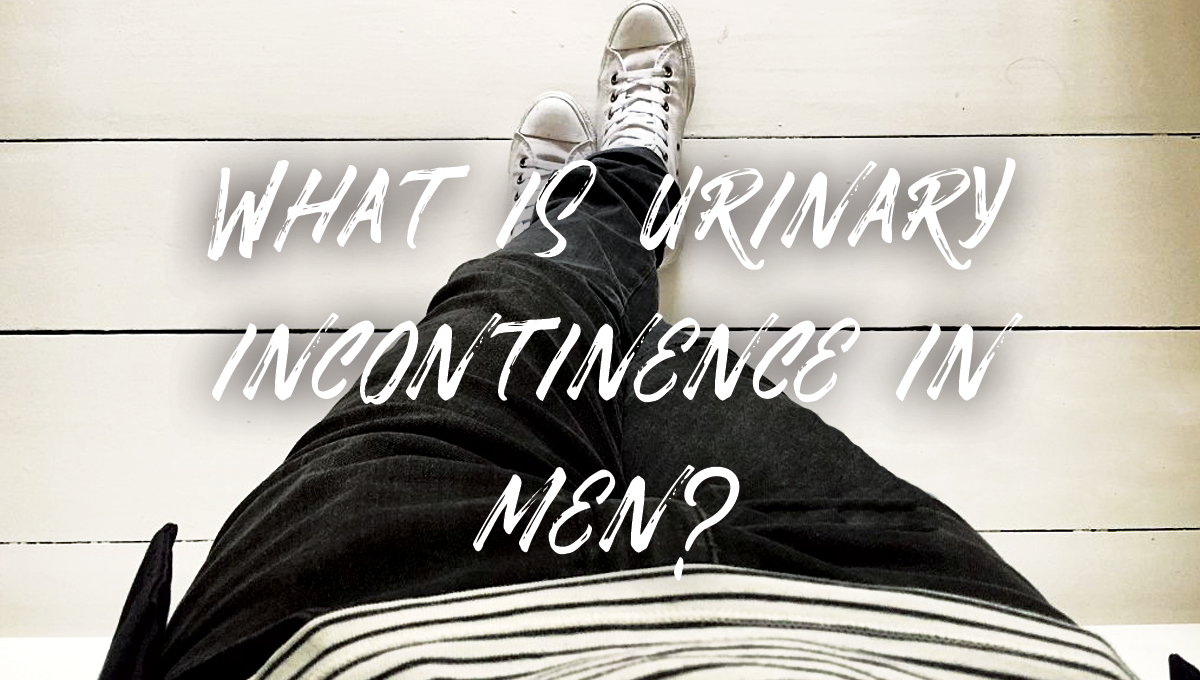

Urinary incontinence can happen when:
- The bladder muscles squeeze at the wrong time or if they squeeze too hard.
- The muscles around the urethra are either weak or damaged, allowing urine leakage even when you do not have a problem with your bladder squeezing at the wrong times.
- You frequently experience incomplete emptying of the bladder when you void, increasing the volume of urine in the bladder significantly and resulting in loss of urine when the bladder gets too full.
- There is a blockage of the urethra which causes urine build-up in the bladder and results in eventual leakage.
Types of urinary incontinence in men
Urinary incontinence can be either a short-term problem or a long-term issue. Short-term urinary incontinence in men is usually caused by an underlying health problem or an ongoing treatment while long-term (chronic) incontinence may be caused by a wide range of physiological problems. The types of urinary incontinence in men include:
- Stress incontinence: Leakage of urine when a man sneezes, coughs, laughs, lifts something, changes position, or performs an activity that strains or puts stress on his bladder.
- Urge incontinence: It is an urge to urinate that is usually so strong that a man can’t make it to the toilet in time. This type of urinary incontinence can happen when the bladder squeezes at the wrong time, resulting in loss of urine even when the bladder has only a small quantity of urine. Overactive bladder is a common example of urinary incontinence, though not all men with overactive bladder will experience leakage of urine.
- Overflow incontinence: Occurs when a man has the urge to urinate but can only release a small amount of urine at a time. Since the bladder does not empty fully as it should, the urine remaining in the bladder leaks at a later time.
- Functional incontinence: Occurs when a man cannot make it to the bathroom in time either because he is not able to walk on his own or because something prevents him from reaching the bathroom promptly.
- Total incontinence: When a man’s sphincter muscles can no longer work, urine will always leak and the man will have no control on when to urinate. This is called total incontinence.
Causes of urinary incontinence in men
Different types of urine incontinence have different causes.
- Stress incontinence: Can occur after the prostate gland is removed or when there is damage to the nerves or the sphincter, which reduces the support afforded to the lower part of the bladder.
- Urge incontinence: Occurs when bladder muscles squeeze extremely hard and make it difficult for the sphincter to hold back urine. As a result of hard squeezing, a man will experience a very strong urge to urinate.
- Overflow incontinence: Can occur when something blocks the urethra, resulting in the build-up of urine in the bladder. Overflow incontinence may be caused by enlarged prostate, prostate cancer, a narrow urethra, or weakened bladder muscles.
In men, urinary incontinence is usually related to prostate problems and various treatments. Nevertheless, excessive drinking of alcohol may make incontinence worse while over-the-counter or prescription drugs such as antidepressants, sedatives, diuretics, narcotics and sedatives can affect the type of symptoms experienced.
Diagnosis and treatment
The diagnosis of urinary incontinence involves a medical history and a physical examination, but also may include keeping a bladder diary. Your urologist will examine you physically and ask some questions about your past health and current symptoms before ordering any tests. Usually these steps will enable your urologist to determine the cause of your urinary incontinence. But at other times, particularly when your symptoms have more than one cause or have an unclear cause, the urologist may include urodynamic testing and an ultrasound in order to come up with a more accurate diagnosis.
The treatment offered will depend on the type of incontinence and how the condition is affecting your life. Generally, urologists treat urinary incontinence in men using medicines, behavioral treatments (such as Kegel exercises and bladder training), surgery, or a blend of two or more of these therapies. A few men may require surgery to regain their bladder control, but most men do not. Apart from the treatments offered by the urologist, there are a few things that men can do at home to help them regain control over their bladders. Such actions include:
- Cutting back on caffeine-containing drinks, such as tea and coffee. Alcohol should be reduced to not more than 1 drink per day while fizzy drinks such as soda pop also should be reduced.
- Eating foods highly rich in fiber to prevent constipation.
- Keeping a healthy weight.
- Stopping cigarette smoking. Talk to your urologist about stop-smoking medicines and programs.
- Practicing double voiding whenever you urinate. This means trying to lose as much urine as you can, relaxing for a short while, then going again.
- Visiting the bathroom many times per day. It is important to wear clothes that you can remove with ease and make your route to the bathroom as clear and quick as possible.
- Engaging in simple pelvic-floor exercises, such as Kegels.
- Using a diary to monitor your urinary symptoms and any leakage of urine. This will help you and your urologist choose the best treatment for you.
Are you experiencing symptoms of urinary incontinence? Do not feel embarrassed to inform your urologist about them. Most men with urinary incontinence can be helped or effectively cured. At St Pete Urology located in St Petersburg, Fl., we fix all urinary incontinence issues affecting men. We have done this for many decades and have some of the best technologies and techniques to help men regain control over their bladders. For more information, visit the “St Pete Urology” site.




